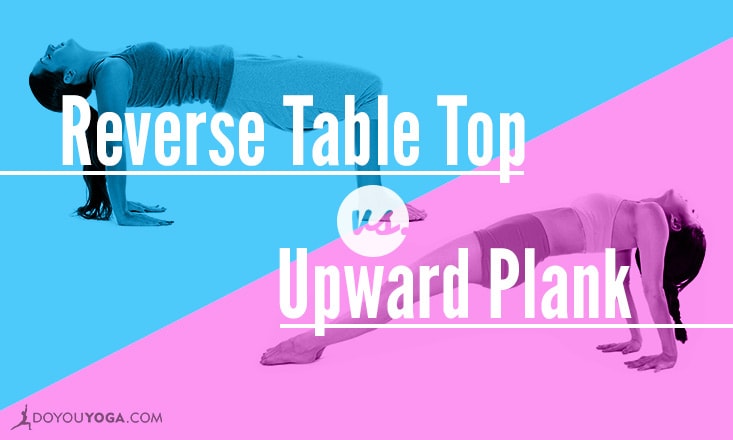When it comes to postures that stretch and strengthen the shoulders and chest, Upward Plank is the king of all asana. But if you’re new to yoga or have tightness anywhere from the shoulders to the hips, Upward Plank is probably going to be a bit of challenge.
You can still get very similar benefits, though, with the modification known as Reverse Table Top Pose or Half Upward Plank.
Benefits of Upward Plank
These days, we spend a lot of time sitting at a desk hunched over a computer, in a car hunched over a steering wheel, or even walking down the street hunched over mobile devices. On top of all of this, everything about our natural way of being has us moving in a forward direction.
This all adds up to a surefire way to develop tight shoulders, tight hips, a weak core, and even a closed off heart.
Upward Plank and Half Upward Plank are great ways to counteract the harm we do to our bodies every day. These two postures open up the front body from the hips and abdomen to the heart and shoulders, restoring balance to the stagnant energy and tight muscles caused by normal daily behaviors.
What this means to you is more energy, less anxiousness and even better digestion.
In addition to stretching the front body, Upward Plank and its modification also works to strengthen the shoulders, core, and muscles along the spine—the long-term impact of which is protection for the often fragile back and spine.
Getting into Upward Plank and Half Upward Plank
Let’s start with the modified pose, Half Upward Plank—also called Reverse Table Top Pose. From a seated position with your knees bent and feet flat on the floor, place your palms about 6 inches behind your hips with your fingertips pointing toward your heels.
With your weight distributed equally between your hands and feet, lift your hips toward the sky and allow your neck to be in a neutral position so that it’s not being strained.
You can allow your head to lower slightly and turn your gaze behind you to open your neck, but take care that your head doesn’t just drop back without support. Feel your shoulders moving down your back to open your chest more and continue to raise your hips as much as is comfortable.
The goal is to achieve a level plane from your knees to your shoulders.
If you’re up to it, let’s take this posture a step further. Slowly straighten your legs, working to keep the soles of the feet connecting to the floor and extending from the toes to the top of the head. This is the position known as Upward Plank.
Tips in Upward Plank and Half Upward Plank
You’ll get more from the pose if you focus on using your leg and core to raise your hips, and not on tightening your buttocks.
If you feel any tension in your neck, tilt your chin forward or use a chair or the wall to support your head. Props such as a bolster, blocks, or stacked blankets can also support your hips if Half Upward Plank is still too much strain on your leg muscles.
Finally, if you suffer from any wrist pain, avoid doing this pose.
Add one of these postures to your regular practice, and you may experience one more benefit—improved posture that’ll have you standing and walking straighter and taller. We can’t help it if that means you’ll also turn heads when you walk in a room!
Image Credit (Upward Plank): Sunina


